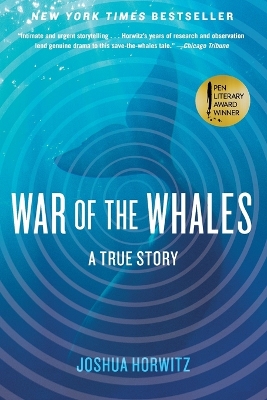
Heather
Written on Oct 18, 2015
On March 15, 2000 a Cuvier's whale beached itself almost outside the door of whale researcher Ken Balcomb's house in the Bahamas. Sightings of the Cuviers are uncommon and there are rarely beachings.
From Wikipedia
While Balcomb and a team of volunteers tried to get the whale back in the water, reports started to come in of other beaked whales stranded on beaches throughout the Bahamas. Most of them died. Balcomb contacted a friend at the Office of Naval Research to report the stranding and to ask if the Navy had any activity going on. He was told that he didn't know but that call started a chain of events leading to a forensic pathologist specializing in mass strandings being dispatched to investigate. While Balcomb was flying over the Bahamas to look for any more beached whales he saw a U.S. Navy destroyer. He knew they didn't usually go out alone. He figured the Navy was doing something in the underwater canyon between the islands of the Bahamas that may have lead to the strandings.
Balcomb was the perfect person to witness this event. Before he started doing research with whales he spent seven years in the Navy working with sonar. Now he was torn between his loyalty to the Navy and his love of the whales.
War of the Whales traces the legal battles that followed as whale researchers tried to get the Navy to limit the use of sonar around marine mammals. It traces the medical discoveries made by the pathologist that shows that the whales all had bleeding in their ears and some had signs of the bends from surfacing too fast to try to escape the noise. Find out about the few people who where brave enough to stand up to the Navy and say that this needed to be fixed even after 2001 when "national security" seemed to trump all other considerations.
It is an emotionally hard book to read at times as it details what it would be like for a whale caught up in the over 200 decibels of sound in the middle of a sonar storm.
Ken Balcomb split his research time between studying beaked whales in the Bahamas and orcas in Puget Sound. In 2003, he saw another instance of Navy use of sonar harassing whales. This time it was from his porch beside Puget Sound. A Navy ship was blasting sonar loud enough to hear out of the water near a pod of orcas. Here is video from that day.
Press Release BRoll - Navy Training Blasts Marine Mammals with Harmful Sonar from Earthjustice on Vimeo.
The next day reports started coming in of dead dolphins washing up on the shore.
This review was originally posted on Based On A True Story
